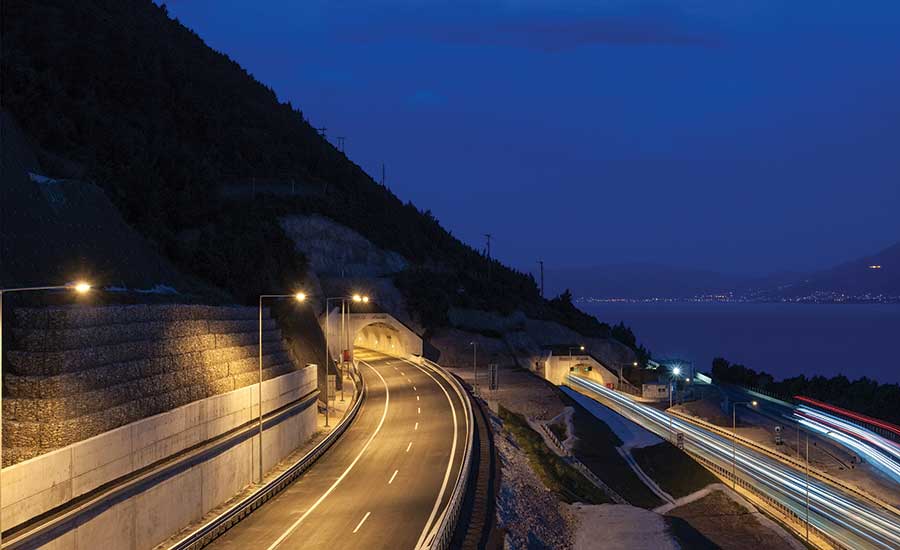The Olympia Odos project—largest of the five concessionaires with an original contract of more than $2 billion, now restructured in a reduced scope to $1.4 billion—comes with its share of Olympic-sized challenges. In the task of upgrading the 63.2-km-long Elefsina-Corinth route and the 18.3-km Patras Bypass and building the 120-km Corinth-Patras link, the Vinci and Hochtief-led construction team had to blend the old with the new.
“We built on top of the old national road,” says Marc Milosevic, chief technical officer for the concessionaire team, which includes Vinci, Hochtief, Aktor, J&P-Avax, Athena and Gek Terna. While crews tried to build over the mostly one-lane, 1960s-era old road as much as possible, there were still more than 100 sections where the two alignments interacted, requiring traffic maintenance on a heavily traveled road.
The 15-million-cu-m cut-and-fill operation proved to be “an unexpectedly difficult exercise,” adds George Leventis, managing director of Langan International, the concessionaire’s technical adviser. “The contractor made more than 50 applications to borrow material, but all were denied. It took three years.” Moreover, the team was building through one of the oldest archeological areas of Greece, he adds.
The alignment is hemmed in by expensive coastal real estate on one side and mountains on the other, making ROW acquisitions extremely difficult. The state acquired the last parcels in February, says Panayiotis Papanikolas, CEO of Olympia Odos.
The project also faced several major interferences: a high-speed-rail project; the relocation of a small town, an old temple, 30 km of a 2,000-Kw system and 21 electric poles; and construction of tunnels along a sinuous alignment while avoiding a fault line and a constantly moving failure plane, says Elias Degiannis, project manager.
Given the volatile environment and long-term maintenance needs—especially of the old road—designers adopted an “agile” approach, says Christos Rados, managing partner with lead designer RACE Consulting Engineers. He observes, “We decided to innovate, not in the design but in the design process.”
Related Article: How a Greek Motorway P3 Survived Upheavals





